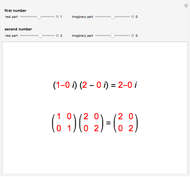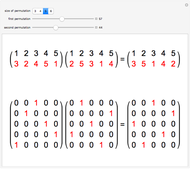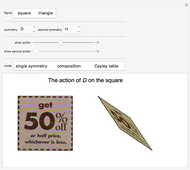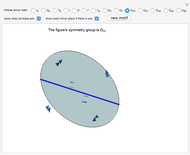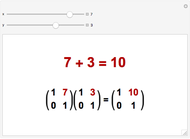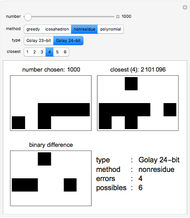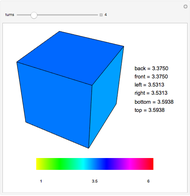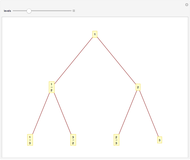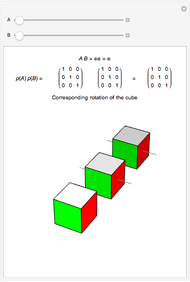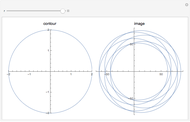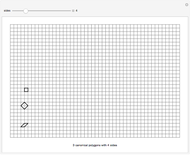An Introduction to Invariant Subspaces Using a Cube

Requires a Wolfram Notebook System
Interact on desktop, mobile and cloud with the free Wolfram Player or other Wolfram Language products.
The numbers 1 through 6 are placed on the faces of a cube. At every turn the number on each face is replaced by the average of its four adjacent faces. The value of each face is displayed as a color. The values converge quickly to the average of the initial values of all faces. Think of the collection of values as a six-dimensional vector being acted on at each turn by a linear transformation,  . The action of the transformation can be completely understood by considering how it acts on each of three
. The action of the transformation can be completely understood by considering how it acts on each of three  -invariant subspaces with direct sum
-invariant subspaces with direct sum  .
.
Contributed by: Keith Schneider (September 2007)
Open content licensed under CC BY-NC-SA
Snapshots
Details
Let  be a vector in
be a vector in  , where each component is the value on a face of the cube. It is easy to define the linear transformation
, where each component is the value on a face of the cube. It is easy to define the linear transformation  that represents a turn. The vector space
that represents a turn. The vector space  can be decomposed into three
can be decomposed into three  -invariant subspaces:
-invariant subspaces:  = {
= { | all faces have the same value},
| all faces have the same value},  ={
={ | the sum of all faces is zero and opposite faces have the same value}, and
| the sum of all faces is zero and opposite faces have the same value}, and  ={
={ | the sum of all faces is zero and opposite faces also sum to zero}. Examining the action of
| the sum of all faces is zero and opposite faces also sum to zero}. Examining the action of  on each subspace makes the reasons for the convergence to the average value clear.
on each subspace makes the reasons for the convergence to the average value clear.
Permanent Citation












